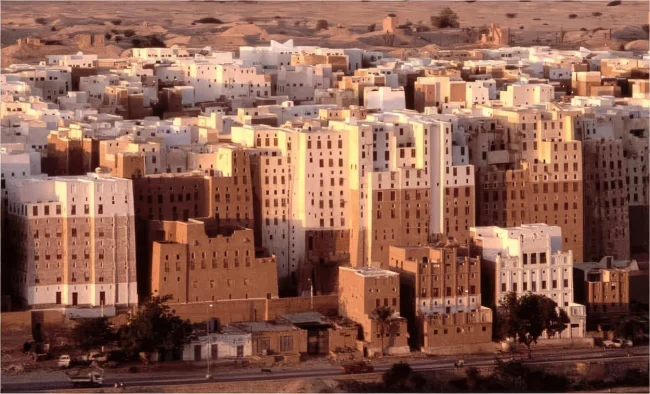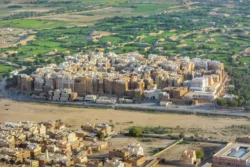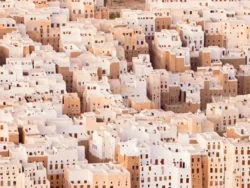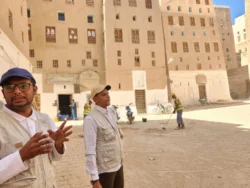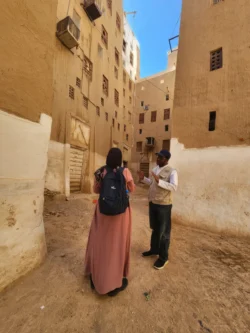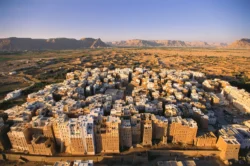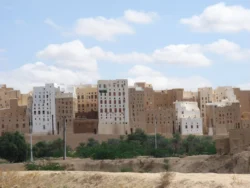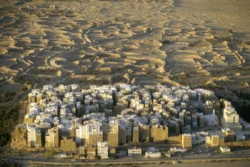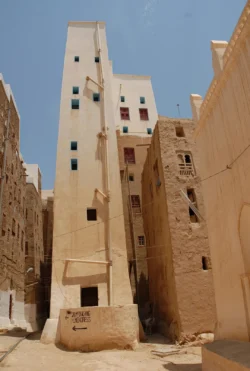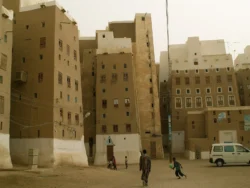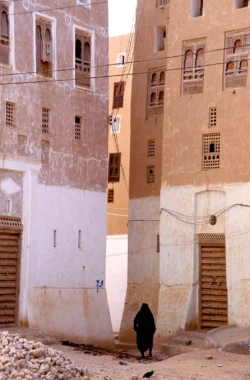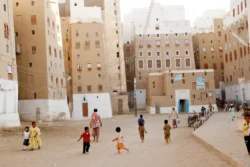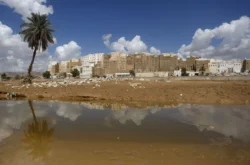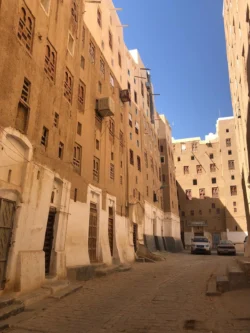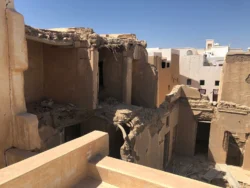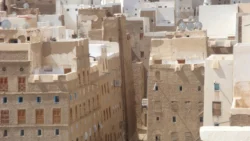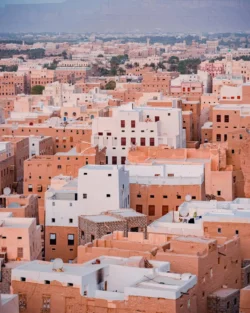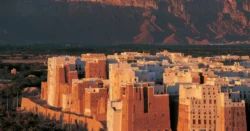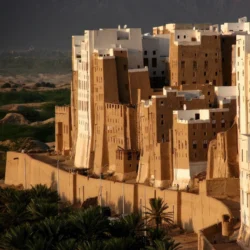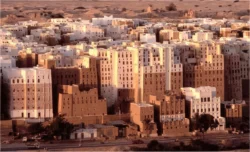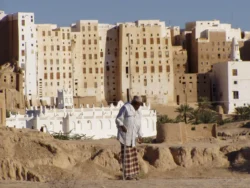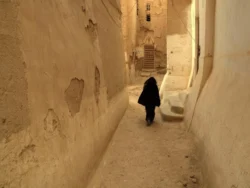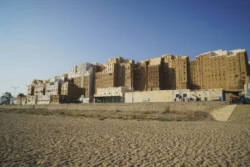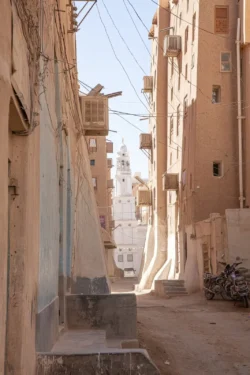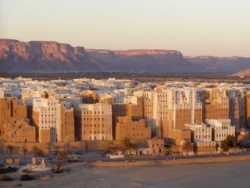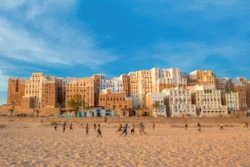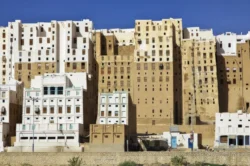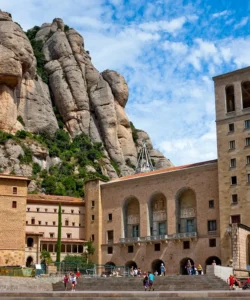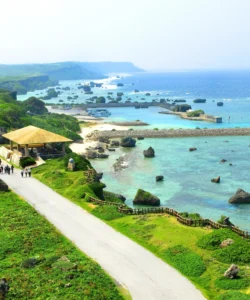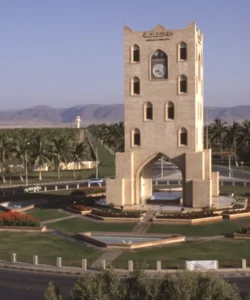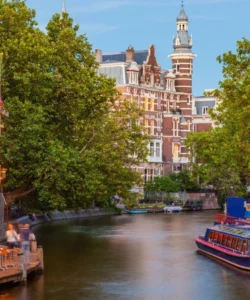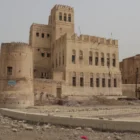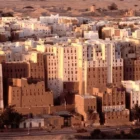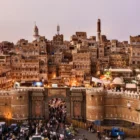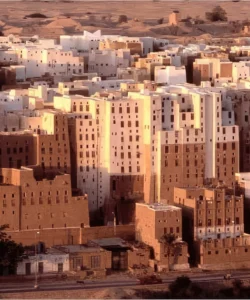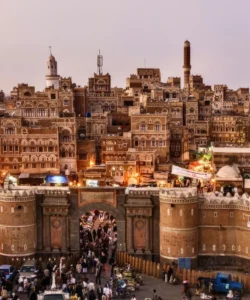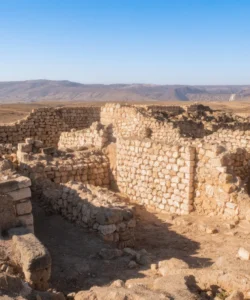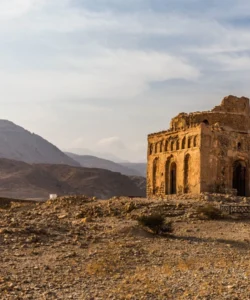Shibam, officially known as the Old Walled City of Shibam, is an extraordinary town located in Wadi Hadhramaut in eastern Yemen. It’s globally renowned for its unique mudbrick high-rise buildings, some reaching up to 11 stories, earning it the nicknames “Manhattan of the Desert” or “Oldest Skyscraper City in the World.” This UNESCO World Heritage Site stands as a testament to ancient urban planning and human ingenuity in a challenging environment.
Listen to an introduction about Shibam
Name and Address
- Name: Shibam (Official: Old Walled City of Shibam)
- Address: Wadi Hadhramaut, Hadhramaut Governorate, eastern Yemen.
How to Get There
Important Note: Travel to Yemen, including Shibam, is currently extremely difficult and unsafe for general tourism due to ongoing conflict and political instability. Most countries advise against all travel to Yemen. The information below is for historical and contextual understanding and is not a recommendation for travel.
- By Air: The nearest airport is Seiyun Airport (GXF). International connections to Seiyun are very limited, often requiring transit through nearby countries like Oman or Egypt (e.g., Cairo).
- By Road: From Seiyun, visitors typically need to arrange private transport, often as part of a convoy or with a local guide and armed escort, due to security concerns and numerous checkpoints.
- On-Site: Shibam is a compact, walled city best explored on foot. Its narrow alleys are not accessible by car.
Landscape and Architecture
Shibam’s architecture is a marvel of vernacular engineering, built to withstand both natural disasters and human threats.
- Mudbrick Skyscrapers: The city is famous for its approximately 500 contiguous mudbrick tower houses, ranging from 5 to 11 stories high, with some reaching over 30 meters (100 feet). Each floor typically contains one or two rooms. This vertical construction was primarily a defensive measure against Bedouin attacks and a response to a devastating flood in the 16th century that destroyed earlier settlements.
- Fortified Wall: The entire rectangular city (approximately 330 meters long by 240 meters wide) is surrounded by a fortified wall, giving it its “walled city” designation.
- Stone Foundations: All houses are set on stone foundations to protect them from the wadi’s floods.
- Maintenance: The mudbrick walls require constant maintenance, with fresh layers of mud applied regularly to protect them from erosion by wind, rain, and heat.
- Urban Planning: Shibam is one of the oldest and best examples of urban planning based on vertical construction, with a grid plan of streets and squares.
- Internal Features: Buildings often feature intricate wooden doors and windows, and some have internal bridges connecting them, which served as escape routes during times of peril.
- UNESCO World Heritage Site: Shibam was designated a UNESCO World Heritage Site in 1982, recognized for its unique architecture and cultural significance. It is currently listed as “World Heritage in Danger” due to the ongoing conflict in Yemen.
What Makes It Famous
- “Manhattan of the Desert”: Its striking skyline of ancient high-rises earned it this famous moniker from British explorer Freya Stark in the 1930s.
- Oldest Skyscraper City: It’s widely considered the oldest skyscraper city in the world, showcasing vertical urban planning centuries before modern high-rises.
- Mudbrick Construction: The fact that these towering structures are built entirely from mudbricks is an extraordinary feat of engineering and adaptability to local materials.
- Historical Resilience: The city has survived for an estimated 1,700 years, with its current form largely dating back to the 16th century after a major flood, demonstrating remarkable resilience against both natural disasters and conflicts.
- Frankincense and Spice Route Stop: Historically, Shibam was a crucial stopping point for traders along the ancient frankincense and spice routes, contributing to its prosperity.
Differences from Some Other Wonders
- Mudbrick Skyscrapers: Unlike any other ancient wonder or famous city, Shibam’s defining characteristic is its unique, tall, multi-story buildings constructed entirely from mudbrick. This contrasts sharply with stone (Pyramids, Temple of Artemis, Mausoleum), marble (Ephesus), or rock-carved (Petra) structures.
- Vertical Urbanism in Antiquity: While other ancient cities might have impressive individual buildings, Shibam is unique for its entire urban fabric being built vertically, with dense, multi-story dwellings as the norm, a concept far ahead of its time.
- Living Museum (Despite Conflict): Unlike many ancient ruins that are archaeological sites, Shibam remains a living city, with residents continuing to inhabit its ancient mudbrick towers, offering a unique glimpse into a continuously lived historical environment.
- Defensive Architecture: The primary architectural driver for Shibam’s verticality and compactness was defense against external attacks and protection from floods, making its design inherently functional and resilient in a way that differs from purely ceremonial or monumental structures.
- Extreme Preservation Challenges: The constant need for maintenance due to the mudbrick material and the threats posed by ongoing conflict and natural disasters present unique preservation challenges not typically faced by stone or brick structures in more stable regions.
Shibam offers a truly unique perspective on ancient urban living and architectural innovation.
Shibam Photos:
